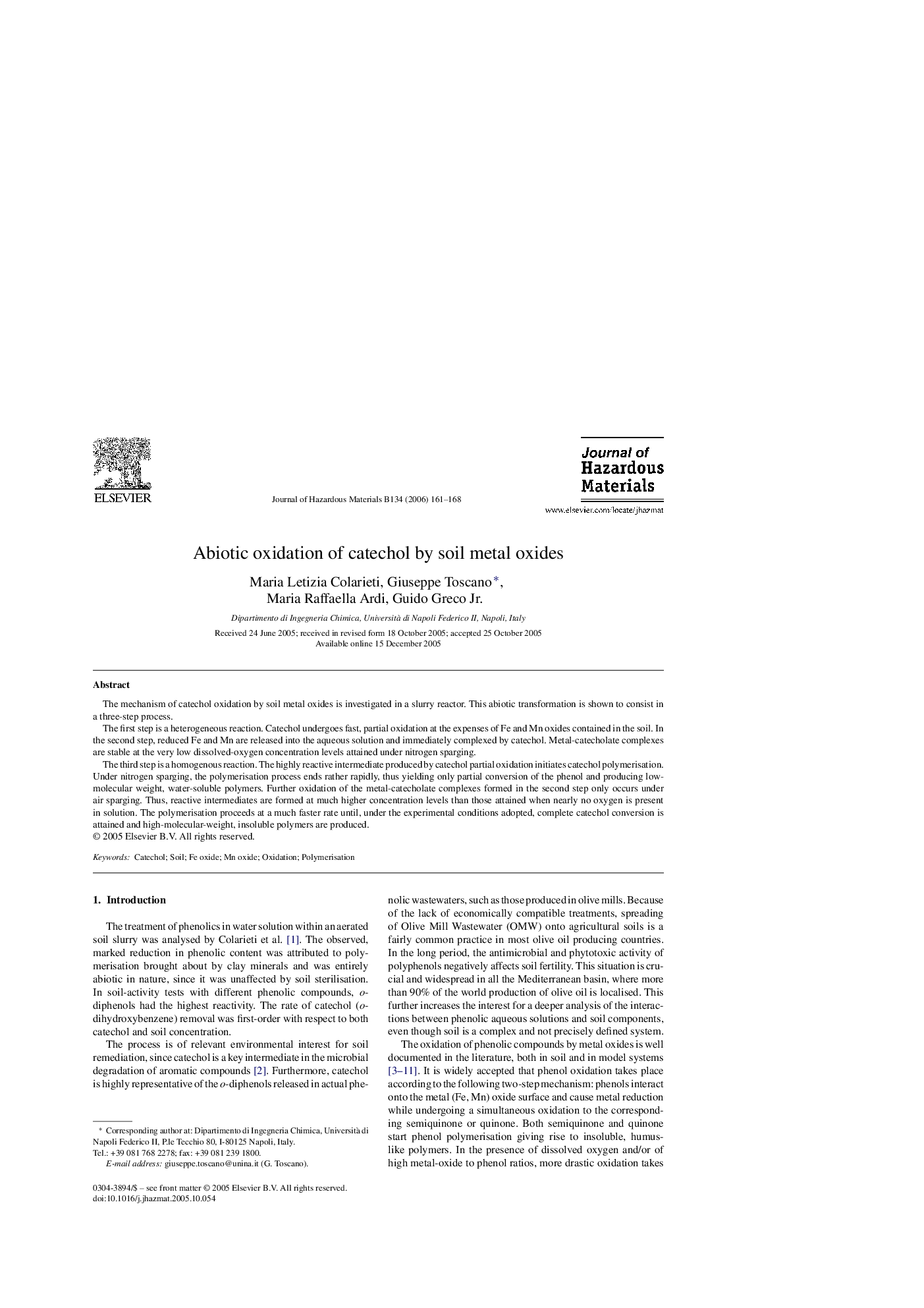| Article ID | Journal | Published Year | Pages | File Type |
|---|---|---|---|---|
| 585261 | Journal of Hazardous Materials | 2006 | 8 Pages |
Abstract
The third step is a homogenous reaction. The highly reactive intermediate produced by catechol partial oxidation initiates catechol polymerisation. Under nitrogen sparging, the polymerisation process ends rather rapidly, thus yielding only partial conversion of the phenol and producing low-molecular weight, water-soluble polymers. Further oxidation of the metal-catecholate complexes formed in the second step only occurs under air sparging. Thus, reactive intermediates are formed at much higher concentration levels than those attained when nearly no oxygen is present in solution. The polymerisation proceeds at a much faster rate until, under the experimental conditions adopted, complete catechol conversion is attained and high-molecular-weight, insoluble polymers are produced.
Related Topics
Physical Sciences and Engineering
Chemical Engineering
Chemical Health and Safety
Authors
Maria Letizia Colarieti, Giuseppe Toscano, Maria Raffaella Ardi, Guido Jr.,
